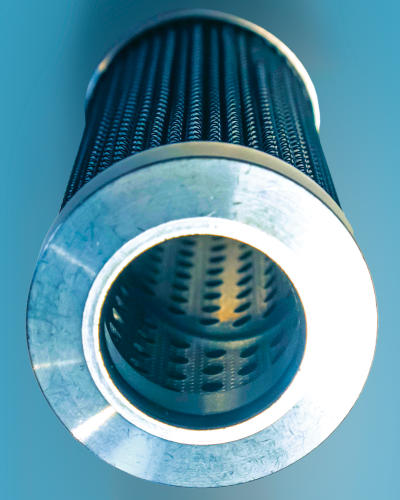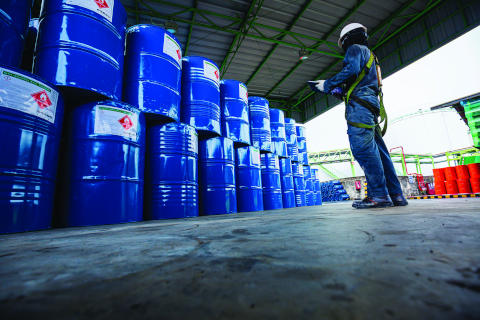Avoid Over-filtration: The Importance of Optimization
 Maintenance is the single most controllable expense in a facility. These words have been quoted time and time again, vis-à-vis controlling equipment failures. Few areas of focus are more impactful on managing expenses than contamination control. However, in the quest for the cleanest achievable oil, some questions typically form: How much filtration is too much filtration? Is there such a thing as oil that is too clean? While the questions are simple and straightforward, the answers are anything but, and include a variety of variables that many don’t account for when starting a fluid cleanliness program.
Maintenance is the single most controllable expense in a facility. These words have been quoted time and time again, vis-à-vis controlling equipment failures. Few areas of focus are more impactful on managing expenses than contamination control. However, in the quest for the cleanest achievable oil, some questions typically form: How much filtration is too much filtration? Is there such a thing as oil that is too clean? While the questions are simple and straightforward, the answers are anything but, and include a variety of variables that many don’t account for when starting a fluid cleanliness program.
Among the first variables that I address when helping a customer develop a contamination control program is the type of fluid in question. Most industrial facilities will employ a range of lubricants for different machine types and environments. Determining where the focus should be for filtration begins with determining which fluids actually require filtration. That’s right - not all lubricants may need to be filtered prior to use.
Some Machines May Not Require Filtration
Let’s start with looking at equipment where the results of contamination are low or where it may not be economically feasible to filter the lubricant. Typically, the first machines in this category tend to be total-loss systems or those completely exposed to the environment. Total-loss equipment (where the lubricant is applied and then drains, evaporates or is otherwise consumed) may not require filtration, provided the applied lubricant doesn’t impact the delivery mechanism. For instance, if we are using a spray or drip system, the lubricant needs to be free of solids that would clog the nozzles or piping but not necessarily much cleaner than that. In systems that operate while freely exposed to the environment (such as open gearing and drive chains), the ambient contaminants will stick to the oil-wetted surfaces, rendering any prior filtration activities useless. In these cases, most will find that filtration is too costly for any benefit that is obtained.
Focus on the Machines That Require Filtration
The equipment at the opposite end of this spectrum operates at high speeds and loads and has tight dynamic tolerances. Typically, hydraulics will require the cleanest oil of any system in our facilities, followed closely by turbine systems and bearing lubricants. While other equipment benefits from cleaner oil, the primary focus on cleanliness should be here. Gearboxes, engines and compressors can have slightly higher contaminated fluid and still function well. Once we start focusing on the machine type, we are forced to dive into the lubricant type.
For the sake of this discussion, we will focus solely on oils, as greases are not commonly filtered, and there are more factors to be concerned with in their formulation. Lubricating oils that are used in heavily loaded systems, such as gears, are increasingly likely to be formulated with any number of solid additives.
Defoamants
Defoamants can be affected by very stringent filtration conditions. While the additives’ physical size makes a difference in this process, the issue comes when the concentration of these additives is too high, typically after someone adds a retrofit kit to try and remedy a high foam condition. Once the concentration is too high, the additives are not able to exist in the semi-dissolved state that allows them to slip through the pores of most filters. Once these additives are removed, the oil is more prone to foaming tendency and stability.
 Anti-scuff Additives
Anti-scuff Additives
Another common additive type found in highly loaded systems is solid extreme pressure or anti-scuff additives. These come in many forms with different chemical and atomic structures but are not dissolved; rather, they are suspended in the oil. Tight filtration removes these additives, and the machine suffers more catastrophic wear in high-contact zones - especially those with sliding motion. Additionally, each additive type will have a common size that must be considered when selecting a filter to use. For instance, if we are using a gear oil with a Molybdenum Disulfide additive at a size of ten microns, we would try to avoid filtering down to that level (and lower) to preserve the additive.
Other fluids may not have a solid additive in them but may instead have many dissolved additives: these too can be filtered out, but the process is different than the physical trapping previously mentioned. Many additives function based on polarity (the natural attraction to other polar items) inside the fluid. Some of these additives are very common, such as anti-wear, corrosion inhibitors and dispersants. If a filter media is selected that is an adsorbent type, it attracts these additives due to the polarity, and they are removed from the fluid. Naturally, if these additives are already clinging to a particle or contaminant in the bulk of the oil, and the particle gets trapped in the filter, the additive level also drops.
Filter Media Types
While the filter media makes a difference, there are a couple things to look at to determine if it will strip additives. For systems seeking low ISO codes, such as an ISO 16/14/12 or lower, the need to employ a fine filter, such as a three-micron beta 200, becomes more apparent. For higher particle counts, the filter can be larger or the capture efficiency lower. While some additives like the solids mentioned above might be screened out due to size exclusion, others are prone to different mechanisms leading to their removal from the fluid.
Active filter media, such as clay, diatomaceous earth, Fuller’s earth and the like, are very polar. While these may work fine in such applications as Electrohydraulic Control (EHC) systems using Phosphate Esters, we would not want to employ them for work in systems containing high amounts of polar additives, such as gears, compressors or engine oils. These filters have an enormous surface area, and the additives are preferentially sticking to them rather than the machine parts (which can lead to a huge drop in additive levels and performance). Other filter media types, such as cellulose, are less prone to stripping additives, but the filtration system can impact this as well. Using full-flow and bypass filtration might not affect additive levels much, but if we employ settling tanks, the story is different. In settling tanks, the additives may fall out of the dissolved state due to a lack of movement or by sticking to other particles that are settling out as well.
While settling tanks are a less common mechanism for cleaning oil for industrial equipment, it is common to find the settling out of additives in lubricant storage tanks or even in drums that have been sitting static for an extended time.
Understanding Additive Levels
A drop in additive levels is normal, and once they drop by approximately twenty-five percent of their original values, we start to wonder if they are still valid or not. The oil analysis reports are simply stating the number of the concentrations of the signatures found in the oil, not really telling us if they are still active. In order to know for sure, we would have to do some performance testing of the oil to determine if the chemical and physical properties have changed to an unsafe level. It is typically only economically feasible to do this when a large volume of oil is at risk.
Filtration is a great place to start any proactive maintenance program, and by taking sound choices to selection and understanding the risks of over-filtration, you can ensure that you are getting the most benefit from your efforts without damaging the oil.
